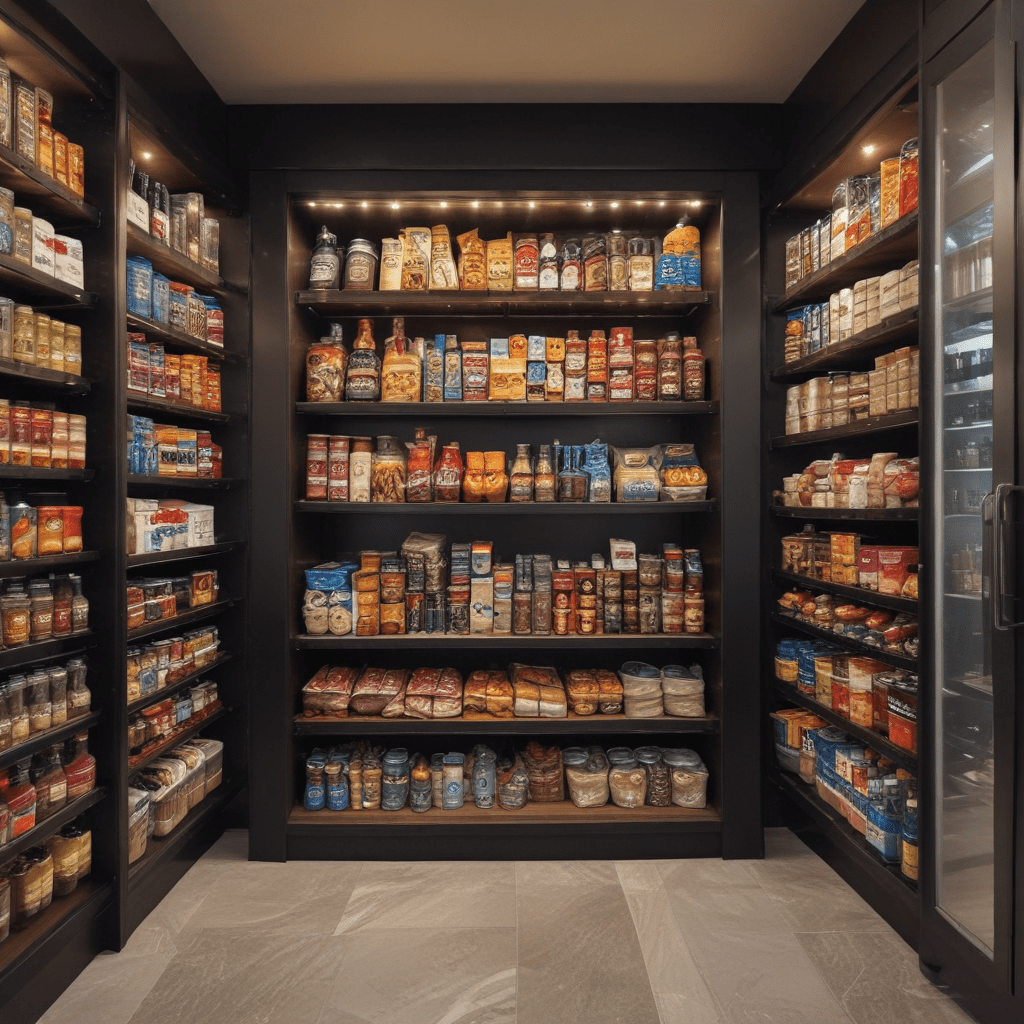## I. Introduction
Healthy snacking plays a crucial role in maintaining overall well-being, providing essential nutrients and energy throughout the day. However, keeping healthy snacks fresh and readily available can be a challenge. This article explores various innovative snack storage solutions to help you maintain the freshness, organization, and accessibility of your healthy options.
## II. Choosing the Right Containers
Selecting the right containers for your healthy snacks is essential to preserve their freshness and prevent spoilage. Consider the type of snack you are storing when making your choice. Glass containers are excellent for airtight storage and preventing odors from transferring. Plastic containers are lightweight and versatile but can absorb odors and may leach chemicals into your food over time. Stainless steel containers offer durability, are naturally odor-resistant, and are ideal for storing dry snacks like nuts and seeds. Reusable bags are a convenient option for storing fruits, vegetables, and sandwiches, but ensure they are made from food-grade materials and properly sealed.
When choosing the size and shape of your containers, consider the portion sizes you typically consume and the space available in your refrigerator, pantry, or lunch bag. Opt for containers that fit comfortably in the designated storage area and avoid overcrowding, which can crush delicate items.
## III. Utilizing Creative Storage Solutions
Beyond traditional containers, numerous creative storage solutions can enhance your healthy snack organization. Repurpose Mason jars for storing nuts, seeds, and dried fruits. Yogurt containers can be cleaned and reused to hold chopped fruits and vegetables. Ice cube trays are surprisingly versatile, perfect for freezing individual portions of yogurt, smoothies, or even homemade fruit purees.
Think creatively about utilizing drawers and shelves for snack organization. Divide drawers with compartments or use clear bins to separate different types of snacks. Label shelves with categories like "fruits," "vegetables," or "on-the-go" for quick and easy identification.
## IV. Labeling and Organization
Labeling your containers with the snack name and date of preparation or purchase is crucial for maintaining organization and freshness. This allows for easy identification and helps you prioritize consuming older items first, reducing waste and ensuring freshness. Additionally, organize your snacks logically, grouping similar items or snacks for specific meals or times of the day. This approach promotes efficiency and simplifies meal preparation or grabbing a quick and healthy snack.
## V. Portion Control and Accessibility
Portion control is essential for mindful eating and healthy snacking habits. Pre-portioning snacks into individual containers allows for controlled consumption and prevents overeating. Consider dividing larger portions of nuts, dried fruits, or granola into smaller bags or containers for convenience and to avoid excessive snacking.
## VI. Maintaining Freshness
Proper storage methods are crucial for maintaining the freshness and quality of your healthy snacks. Fruits and vegetables thrive in the high-humidity environment of the crisper drawer in your refrigerator. Keep leafy greens in airtight containers lined with paper towels to absorb excess moisture. Store nuts and seeds in cool, dark places in airtight containers to prevent oxidation and rancidity.
Temperature control is essential for maintaining freshness. Store perishable snacks like fruits, vegetables, and dairy products in the refrigerator at 40°F or below. Frozen fruits and vegetables retain their nutrients and freshness for longer periods but should be thawed properly before consumption.
## VII. Leftovers and Repurposing
Leftover snacks can be safely stored and repurposed into delicious new dishes. Transfer leftover fruits and vegetables to airtight containers and store them in the refrigerator for up to 3-5 days. Repurpose leftover fruits into smoothies, yogurt parfaits, or baked goods. Leftover vegetables can be added to soups, stir-fries, or omelets. Get creative and find innovative ways to use leftover snacks to minimize waste and maximize flavor.
## VIII. Tips for On-the-Go Snacking
Maintaining healthy snacking habits while on the go can be challenging but achievable with proper planning. Pack pre-portioned snacks in reusable containers or bags to avoid unhealthy vending machine options. Include a variety of nutrient-rich snacks like fruits, vegetables, nuts, seeds, and whole-grain crackers. Invest in a small cooler bag with ice packs to keep perishable snacks cool and fresh during extended outings.
## IX. Conclusion
Implementing these innovative snack storage solutions can help you maintain the freshness, organization, and accessibility of your healthy options. By choosing the right containers, utilizing creative storage ideas, practicing proper labeling and organization, and prioritizing portion control, you can ensure that healthy snacks are always within reach, promoting a balanced and nutritious diet.
## X. Frequently Asked Questions
Q: What are some healthy snack options for on-the-go?
- Fruits: Apples, bananas, grapes, oranges, berries
- Vegetables: Baby carrots, celery sticks, cucumber slices, cherry tomatoes
- Nuts and seeds: Almonds, walnuts, cashews, pumpkin seeds, sunflower seeds
- Whole-grain crackers: Triscuits, Wheat Thins, Ryvita
- Yogurt: Greek yogurt, Icelandic yogurt, plant-based yogurt
Q: How can I make healthy snacking more convenient?
- Pre-portion snacks into individual containers or bags.
- Keep a variety of healthy snacks readily available in your refrigerator, pantry, or office.
- Pack a small cooler bag with ice packs for extended outings.
- Utilize meal prepping strategies to prepare healthy snacks in advance.
Q: How can I reduce snack-related waste?
- Purchase snacks in bulk to minimize packaging waste.
- Invest in reusable containers and bags.
- Repurpose leftover snacks into new dishes.
- Compost fruit and vegetable scraps.
Q: What are some creative ways to store snacks?
- Mason jars
- Yogurt containers
- Ice cube trays
- Drawer dividers
- Clear bins
- Snack caddies


